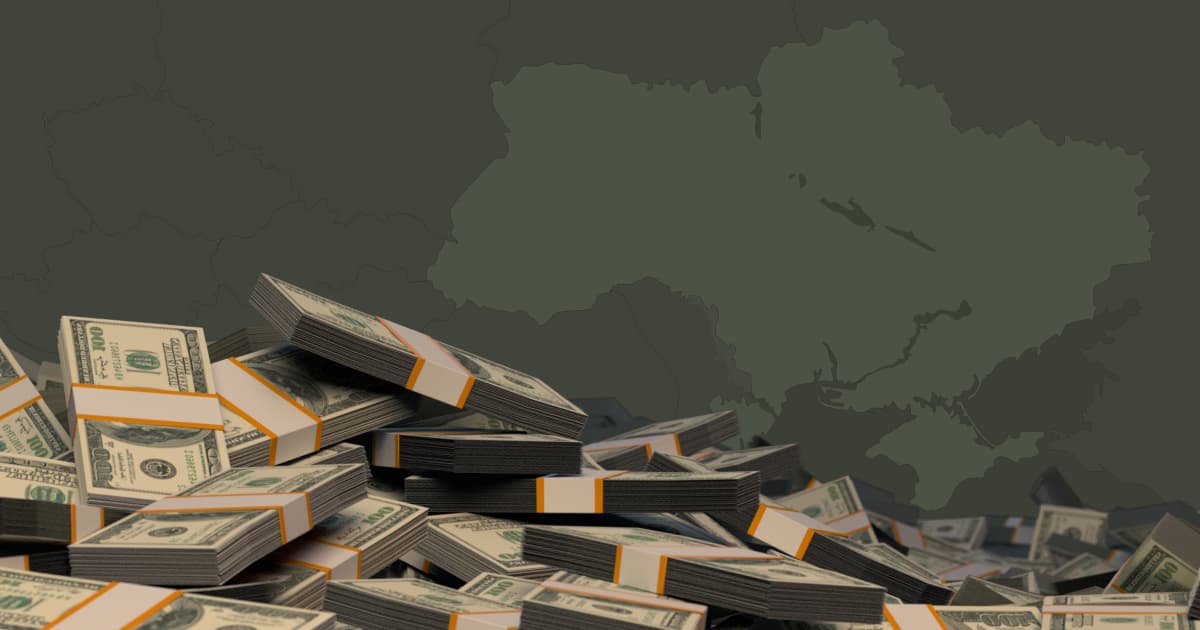External debt of Ukraine: how and when to give it back?
Anna Fratsyvir

Since the beginning of a full-scale invasion of Russia, international partners have actively started to support Ukraine financially with soft loans and grants.
Numerous organizations, such as the World Bank and the International Monetary Fund, provided emergency financial assistance packages. The assistance continues to be provided, but how, when, and what exactly should Ukraine give back after the end of the war — read in the material.
What is external debt?
One of the important components of the state economy is its ability to attract foreign capital. External debt of the country is formed from these borrowings. Its size is correctly calculated in relation to the national gross domestic product (GDP). Loans and borrowings are obtained from various international organizations, such as the International Monetary Fund (IMF) or the World Bank, other states, or private banks.
The lending party has its own interest — economic or political. The total external debt can be a combination of long-term and short-term loans, with the term of the latter not exceeding five years.
"A state loan usually involves some political direction. For example, the EU, when providing macro-financial aid, is oriented towards the fact that they have a certain policy of cooperation with Ukraine, and they give money to avoid problems on the eastern borders. Lending organisations have their own missions. The IMF provides loans to help countries with their balance of payments problems. All their recommendations relate to balancing and stabilising the country," Dmytro Boiarchuk, executive director of the CASE Ukraine Center of Social and Economic Research, told Svidomi.

According to the Ministry of Finance, as of the end of November 2022, Ukraine's external debt consisted of more than $107 billion.
How much and what kind of aid has Ukraine received since the beginning of the full-scale invasion?
On November 18, 2022, the Prime Minister of Ukraine, Denys Shmyhal, announced that Ukraine had received about $23 billion in international aid. This amount includes both loans and grants. Loans are funds that are issued for a specified period of time at interest, which are expected to be repaid within the contractual terms; grants are non-repayable aid. For example, on August 24, Ukraine received a $3 billion grant from the US.
Ukraine is obliged to repay the loans provided by the countries. Often the funds were received on soft terms. For example, Italy has provided a €200 million soft loan to finance secondary education with a zero interest rate. Japan has signed a $100 million loan agreement to support Ukraine's economy, and Canada has provided a C$1 billion loan with an interest rate of 1.69% per annum for 10 years.
Another form of lending is EU macroeconomic assistance.
"Creditors lend to make money. Even if we pay 5%, that's crazy money. This money is not from the EU budget, they lend EU funds at -0.5%, and to us at 5%," the expert explains.
Since the war and the economic crisis associated with it led to a significant drop in tax revenues, the resulting deficit is compensated by international aid. However, it can be assumed that the amount of aid will decrease over time due to the internal political constraints of the countries and the general crisis, and the deficit will still remain.
When should Ukraine return the funds?
The borrowed funds must be repaid because otherwise there is a risk of default.
“Money is borrowed based on the ability to pay it back. A declared default means that you will not pay off your debts, and when you need to borrow funds, you will no longer be given any,” the expert emphasizes.
According to the draft state budget for 2023, the maximum amount of Ukraine’s public debt is set at the level of more than ₴6.4 trillion.
"Ukraine's external debt mainly includes Eurobonds — loans that we placed on a commercial or semi-commercial basis. There are also Eurobonds guaranteed by governments. The US gives guarantees: if we fail to make payments, they will repay them. As a rule, the interest rate is lower," says Boiarchuk.

On August 10, Ukraine managed to obtain the necessary consent from the Eurobonds holders to restructure its debt, which delayed payments and maturity for two years. In addition, on September 14, the Minister of Finance of Ukraine Serhii Marchenko signed a Memorandum of Understanding on the suspension of payments on public and piblicly guaranteed debt with a group of official creditors of Ukraine from the G7 countries and the Paris Club to mitigate the economic consequences of the full-scale war.
"The delay in Ukraine’s debt repayment does not affect its image in the current situation, because it is not our fault," the expert said.
The war plays a major role in the timing of Ukraine's external debt repayment.
"If the war does not end in two years, the payments will not even be postponed, but restructured, because it will be a different situation," says Boiarchuk.
How can the external debt be repaid?
According to Dmytro Boiarchuk, in a normal situation, countries repay loans and immediately borrow agaim, which is called a rollover — the issuance of new bond loans of the principal debt for loans issued earlier. This is one of the most common ways to pay off external debt.
"However, if you default, the rollover process stops for you," warns the expert.
Sometimes politicians propose to increase taxes or introduce excise to increase the state budget revenues to pay off the external debt, but this is a bad strategy. Boiarchuk suggests balancing the budget.
"Debt is taken from the deficit — when expenditures exceed revenues. If the debt is stable, inflation and GDP are increasing, then you can do a rollover, and the debt will gradually decrease. Problems begin when the debt grows faster than the economy. In our case, the deficit is huge due to military expenses. However, a significant part of the funds we receive are grants,” Dmytro Boiarchuk sums up.


